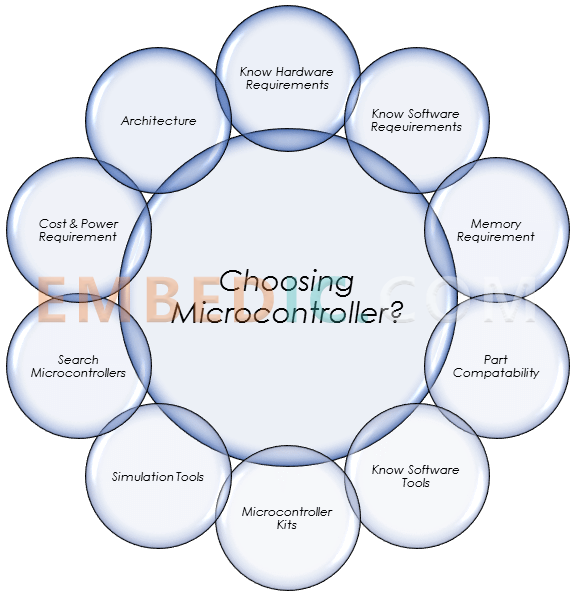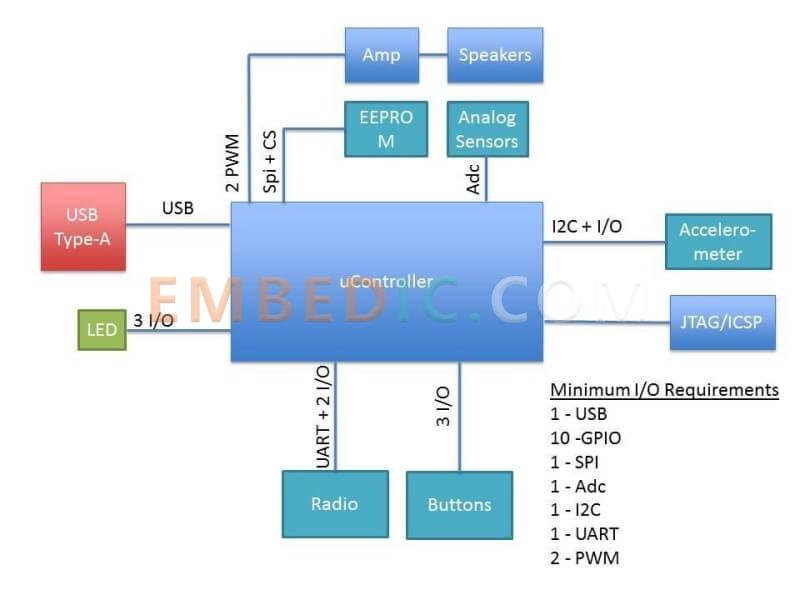How to choose an appropriate microcontroller? As we know that a microcontroller has numerous uses: in customer electronics like playthings as well as devices, in communication gadgets like cell phones and computer systems, and in clinical instruments like ECG makers and also monitors.

Likewise, in industrial settings, it can be utilized to regulate temperature level or stress, count time, procedure rate, or trigger the braking system. Because microcontrollers are suitable for details tasks, it is necessary to pick a microcontroller that is most suitable for a project.
We see that question in forums regularly, particularly from people that are simply getting started. Our response, naturally, is: "it depends what you are wanting to do." There's no such thing as a 'ideal' microcontroller ... if there was, all the makers would certainly make that, as well as there wouldn't be any type of selection left.
Rather, you have to make tradeoffs between competing rate of interests: The fastest chips tend to utilize more power than the slowest ones. The boards with one of the most IO pins are larger (and normally set you back more) than ones with fewer functions.
There are two general sorts of user interfaces that need to be noted.
1. The initial are interaction user interfaces. These are peripherals such as USB, I2C, SPI, UART, and so forth. Make an unique note if the application needs USB or some type of Ethernet. These interfaces greatly affect just how much program room the microcontroller will need to support.
2. The 2nd type of interface is digital inputs and outputs, analog to digital inputs, PWM's, etc. These two user interface kinds will dictate the variety of pins that will be required by the microcontroller. Number 1 reveals a generic instance of a block representation with the i/o needs detailed.

The software program style as well as needs can significantly impact the selection of a microcontroller. How heavy or how light the processing demands will certainly identify whether you choose an 80 MHz DSP or an 8 MHz 8051. Much like with the hardware, make notes of any needs that will be essential.
For example, do any of the algorithms require floating point mathematics? Are there any high frequency control loopholes or sensors? Estimate for how long and how commonly each job will need to run. Obtain an order of size feel for how much handling power will certainly be required. The quantity of computing power required will certainly be among the biggest needs for the style and also regularity of the microcontroller.
Making use of the information from step 1 as well as 2 an engineer should have the ability to start getting an idea of the style that will certainly be needed. Can the application manage with eight bit designs? How around 16 bits? Does it require a 32-bit Arm core? In between the application and the called for software program algorithms these questions will certainly start to converge on an option.
Please remember the possible future requirements and feature creep. Just because you could currently get by with an 8 bit microcontroller doesn’t mean you shouldn’t consider a 16 bit microcontroller for future features or even for ease of use. Don't forget that microcontroller choice can be an iterative procedure. You might choose a 16-bit part in this step but after that in a later action locate that a 32 little bit Arm component works better.
Flash and RAM are two very critical components of any type of microcontrollers. Making sure that you don’t lack program space or variable space is definitely of greatest priority.
It is much easier to choose a get rid of too much of these functions than inadequate. Getting to the end of a design as well as uncovering that you require 110% or that attributes need to be reduced simply isn't mosting likely to fly. After all, you can constantly begin with even more and afterwards later move to a more constrained component within the same chip family.
Making use of the software application architecture and the communication peripherals included in the application, a designer can estimate just how much flash and also RAM will be required for the application. Don't forget to leave room for feature creep and also the next versions! It will certainly conserve several headaches in the future.
Since there is a much better concept of what the required features of the microcontroller will certainly be the search can begin! One area that can be a great place to start is with a microcontroller distributor such as EmbedIC, Avnet, Future Electronics or comparable. Talk with an FAE concerning your application and requirements as well as oftentimes they can route you to a new part that is reducing edge and also meets the demands. Just remember that they may have stress on them at that time to push a particular family members of microcontrollers!
The next best area to begin is with a silicon company that you are currently familiar with. For instance, if you have actually utilized Microchip components in the past and had an excellent experience with them, then start at their website. The majority of silicon suppliers have a search engine that allows you to enter your outer sets, I/O as well as power demands and it will narrow down the listing of parts that match the standards. From that checklist the designer can then move forward in the direction of selecting a microcontroller.
At this step, it is a blast to examine the power needs and also cost of the component. If the device will be powered from a battery and mobile, after that making certain the components are low-power is absolutely perilous. If it does not satisfy power needs after that maintain weeding the note down until you have a choose couple of. Don't neglect to analyze the item price of the processor either. While costs have continuously been approaching $1 in volume for lots of components, if it is very specialized or a premium handling machine then price could be essential.
With the list of possible components in hand, now is a good time to start checking on just how available the part is. A few of things to bear in mind are what the preparations for the component?
Are they kept in stock at numerous representatives or exists 6-- 12 week lead time? What are your demands for accessibility? You don't want to obtain stuck to a large order as well as have to wait three months to be able to fill it. Then there is an inquiry of just how new the component is as well as whether it will certainly be around throughout of your product life cycle. If your product will certainly be around for 10 years then you require to find a component that the supplier warranties will still be constructed in one decade.
If a development kit isn't readily available then the chosen part is most likely not a good choice as well as they ought to return a couple of actions as well as locate a better part. Most growth sets today cost under $100. Paying any more than that (unless it is designed to work with numerous processor modules) is just too much. An additional part might be a much better choice.
The last consideration is to analyze the compiler and tools that are available. Most microcontrollers have a number of options for compilers, example code and debugging tools. It is very important to ensure that all the essential devices are offered for the part. Without the right tools the development process could become tedious and also pricey.
Despite the option a microcontroller absolutely nothing is set in stone. Usually the advancement package gets here long prior to the very first prototyped hardware. Take advantage by building up examination circuits and also interfacing them to the microcontroller. Pick high threat parts and get them servicing the advancement kit. It may be that you uncover the component you thought would work fantastic has some unpredicted concern that would compel a different microcontroller to be picked. Nevertheless, very early trial and error will ensure that you made the best option and that if a change is needed, the influence will certainly be very little!
Manufacturer: Silicon Labs
IC MCU 32BIT 64KB FLASH 48TQFP
Product Categories: 32bit MCU
Lifecycle:
RoHS:
Manufacturer: Texas Instruments
IC DSP FIX/FLOAT POINT 361NFBGA
Product Categories: DSP
Lifecycle:
RoHS:
Manufacturer: Texas Instruments
IC DSP FIX/FLOAT POINT 361NFBGA
Product Categories: DSP
Lifecycle:
RoHS:
Manufacturer: Texas Instruments
IC DGTL MEDIA SOC 337NFBGA
Product Categories: SOC
Lifecycle:
RoHS:
Looking forward to your comment
Comment